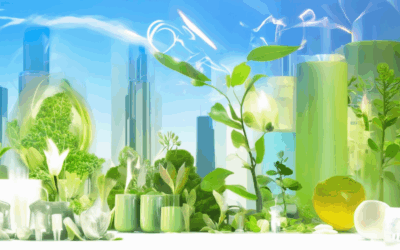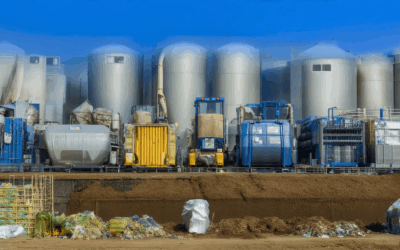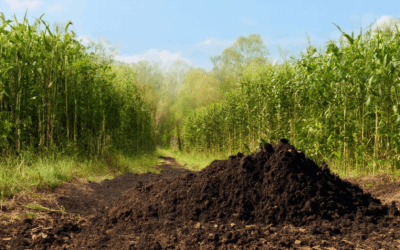As global demand for sustainable solutions continues to rise, innovative approaches to managing waste and resources have gained significant traction. One such approach is the use of eco-friendly pyrolysis systems, which offer a transformative way to handle plastic waste while minimizing environmental impact. These systems not only provide a means to recycle and repurpose plastic but also align with broader goals of sustainability and a circular economy. By leveraging advanced technologies, eco-friendly pyrolysis systems are emerging as a promising solution to reduce plastic pollution and promote responsible resource management. However, as with any new approach, there are challenges and considerations to weigh, including energy efficiency, emissions, and scalability. In this article, we delve into the intricacies of eco-friendly pyrolysis systems, exploring their benefits, limitations, and the potential they hold for shaping a more sustainable future. From understanding their role in reducing plastic waste to examining the latest innovations in technology, this comprehensive exploration aims to provide valuable insights for anyone considering the adoption of these systems.

Is Pyrolysis Environmentally Friendly?
Pyrolysis is indeed considered an environmentally friendly process due to its ability to transform organic materials into valuable resources while minimizing environmental impact. Here’s a breakdown of its environmental benefits:
-
Reduction of Waste : Pyrolysis effectively converts non-recyclable plastics and organic waste into biochar, a carbon-rich material. This reduces the volume of waste sent to landfills, helping to lower environmental pollution.
-
Energy Efficiency : The process typically operates at temperatures between 300°C and 500°C, making it relatively energy-efficient compared to other waste treatment methods like incineration, which can produce harmful emissions.
-
Carbon Sequestration : Biochar produced through pyrolysis acts as a carbon sink, storing carbon and potentially contributing to carbon sequestration efforts, which helps mitigate climate change.
-
Sustainable Material Conversion : By converting biomass into biochar, pyrolysis supports a more sustainable material conversion process, aligning with the goals of a circular economy.
-
Emission Reduction : While pyrolysis does produce some greenhouse gas emissions, these are often outweighed by the benefits of biochar production, particularly in terms of carbon storage and reduced landfill use.
Pyrolysis is increasingly seen as a promising solution for managing waste and supporting sustainable practices. Companies like Pyrolysium are at the forefront of promoting this technology, emphasizing its potential to create a more eco-friendly future. By adopting pyrolysis, we can move closer to a world where waste is turned into resources, reducing our environmental footprint.
How to Make Pyrolysis Sustainable
To make pyrolysis sustainable, several key strategies must be implemented:
-
Energy Efficiency : Utilize renewable energy sources such as solar or wind power to operate pyrolysis plants, significantly reducing reliance on non-renewable energy.
-
Feedstock Optimization : Employ advanced sorting and processing techniques to maximize the use of municipal waste, ensuring efficient decomposition and minimizing environmental impact.
-
Waste Management Integration : Establish robust waste collection and transportation systems to supply pyrolysis plants consistently, avoiding the creation of new waste streams.
-
Sustainable Processing Techniques : Develop optimized pyrolysis processes that minimize energy consumption and emissions, focusing on producing high-quality biochar for various applications.
-
Policy and Incentives : Advocate for government support through subsidies, tax incentives, and regulations promoting sustainable practices, encouraging widespread adoption.
-
Community Engagement : Educate local populations about the benefits of pyrolysis, fostering a culture of waste reduction and resource utilization.
-
Research and Innovation : Invest in R&D to enhance efficiency, lower costs, and explore new uses for biochar and other pyrolysis byproducts.
-
Circular Economy Integration : Promote the reuse of biochar and other outputs in agriculture, construction, and other sectors, embedding sustainability into the broader economy.
By combining these strategies, pyrolysis can become a cornerstone of sustainable waste management, contributing positively to environmental and economic health.

Why Pyrolysis Is Not Widely Used
Pyrolysis, a process that converts organic materials into valuable resources like biochar through thermal decomposition in the absence of oxygen, is not widely adopted due to several barriers:
-
High Costs : The initial investment required for pyrolysis facilities can be substantial, and ongoing operational costs, including energy consumption and maintenance, further hinder widespread adoption.
-
Scalability Challenges : The process demands high temperatures and specific equipment, making it difficult to scale effectively. This limits its application for varied input sizes and complicates large-scale implementation.
-
Lack of Awareness : Public knowledge about pyrolysis is limited, resulting in low demand. Educational campaigns and outreach efforts are necessary to increase awareness and acceptance.
-
Competition from Established Methods : Traditional waste management techniques like landfilling and incineration are well-established, offering reliability and cost-effectiveness in many regions, making pyrolysis seem less appealing.
-
Regulatory Hurdles : Navigating varying regional regulations can be challenging for pyrolysis operators, as the technology may face stricter scrutiny or require additional permits compared to established methods.
-
Availability of Alternatives : Other waste conversion methods, such as composting and anaerobic digestion, are more accessible and have a longer history of use, potentially deterring adoption of pyrolysis.
Addressing these factors through technological advancements, educational initiatives, and supportive policies could facilitate greater adoption of pyrolysis, positioning it as a viable solution for sustainable waste management.

Downsides of Pyrolysis
Pyrolysis, while a promising process for transforming waste materials into valuable resources, does have several drawbacks and challenges that must be considered:
-
High Costs : Implementing pyrolysis facilities requires significant investment in machinery, infrastructure, and energy. The initial capital expenditure is substantial, and ongoing operational costs, including labor, maintenance, and energy consumption, can be prohibitive for many industries.
-
Safety Risks : The high-temperature nature of pyrolysis processes poses inherent safety risks. Accidents, such as fire outbreaks or explosions, can occur if proper safety protocols are not followed. Handling hazardous materials and managing the thermal decomposition process demands rigorous safety measures and trained personnel.
-
Environmental Impact : Although pyrolysis reduces waste, it still generates emissions. The process releases greenhouse gases like carbon dioxide and hydrogen cyanide, contributing to environmental pollution. Additionally, the energy-intensive nature of pyrolysis raises concerns about its overall environmental footprint.
-
Material Limitations : Not all materials are suitable for pyrolysis. Certain plastics and composites may not decompose effectively, leading to incomplete breakdowns and residual waste. This can diminish the efficiency of resource recovery efforts.
-
Regulatory Challenges : Pyrolysis facilities must comply with various environmental and safety regulations, which can vary by region. Navigating these legal requirements can complicate operations and increase costs, potentially delaying project timelines.
-
Public Perception : Public skepticism towards new technologies can pose challenges. Misinformation or fear regarding potential health hazards and environmental impacts may hinder the adoption of pyrolysis, despite its proven benefits.
These factors highlight the need for careful consideration of economic, safety, environmental, and social aspects when implementing pyrolysis processes. Addressing these challenges is essential for maximizing the benefits of pyrolysis while minimizing its drawbacks.
Is Pyrolysis Toxic?
Pyrolysis is a process that involves the thermal decomposition of organic materials in the absence of oxygen. While it can produce useful byproducts like biochar, the process itself can release harmful substances, making it potentially toxic.
During pyrolysis, organic materials break down, releasing volatile organic compounds (VOCs) and other pollutants. These chemicals can be hazardous to human health and contribute to air pollution. The extent of toxicity depends on factors like temperature, airflow, and the type of material being decomposed.
When pyrolysis is conducted in an uncontrolled or poorly ventilated environment, the release of toxic gases can pose significant health risks. Symptoms of exposure may include irritation of the eyes, skin, and respiratory systems, as well as headaches and dizziness.
However, when pyrolysis is managed in a controlled setting, such as through industrial incinerators or pyrolysis reactors, the emissions can be minimized. Proper ventilation and filtration systems are essential to reduce the risk of toxicity associated with the process.
For those interested in learning more about pyrolysis and its applications, exploring resources like this guide on biochar production can provide deeper insights into the process and its potential benefits.

What Happens to Plastic After Pyrolysis?
Pyrolysis is a thermal decomposition process that breaks down plastic waste into three primary products: pyrolysis oil, pyrolysis gas, and a carbon-rich residue known as biochar. The specific outcomes depend on the type of plastic, temperature, and processing conditions.
- Pyrolysis Oil: Typically constitutes between 50% to 80% of the final products, depending on the plastic type and purity. This oil can be used as a fuel or processed further into other materials.
- Pyrolysis Gas: Comprises around 20%-30% of the products and includes combustible gases like syngas, which can be utilized for energy generation or further refining.
- Biochar Residue: Forms approximately 10%-20% of the output and is a stable, carbon-rich material. It can be applied to soil as a biofertilizer or used in industrial processes.
During pyrolysis, significant amounts of energy are released, often captured as steam or electricity, contributing to a sustainable energy cycle. This process offers an alternative to traditional disposal methods, reducing environmental impact by minimizing hazardous emissions.
The effectiveness of pyrolysis depends on the quality and type of plastic input. Higher temperatures and optimized conditions enhance yield and product consistency. Implementing pyrolysis facilities requires consideration of economic viability and operational efficiency, but its benefits in promoting a circular economy make it a promising solution for plastic waste management.
For optimal results, it’s essential to sort plastic waste by type before pyrolysis, as different plastics decompose differently. This approach ensures higher efficiency and maximizes the utility of the resulting products.
Conclusion
Pyrolysis effectively transforms plastic waste into valuable resources, contributing to a sustainable future. By producing oil, gas, and biochar, it offers a circular solution to traditional disposal methods, emphasizing the importance of responsible plastic management and renewable energy utilization.




0 Comments